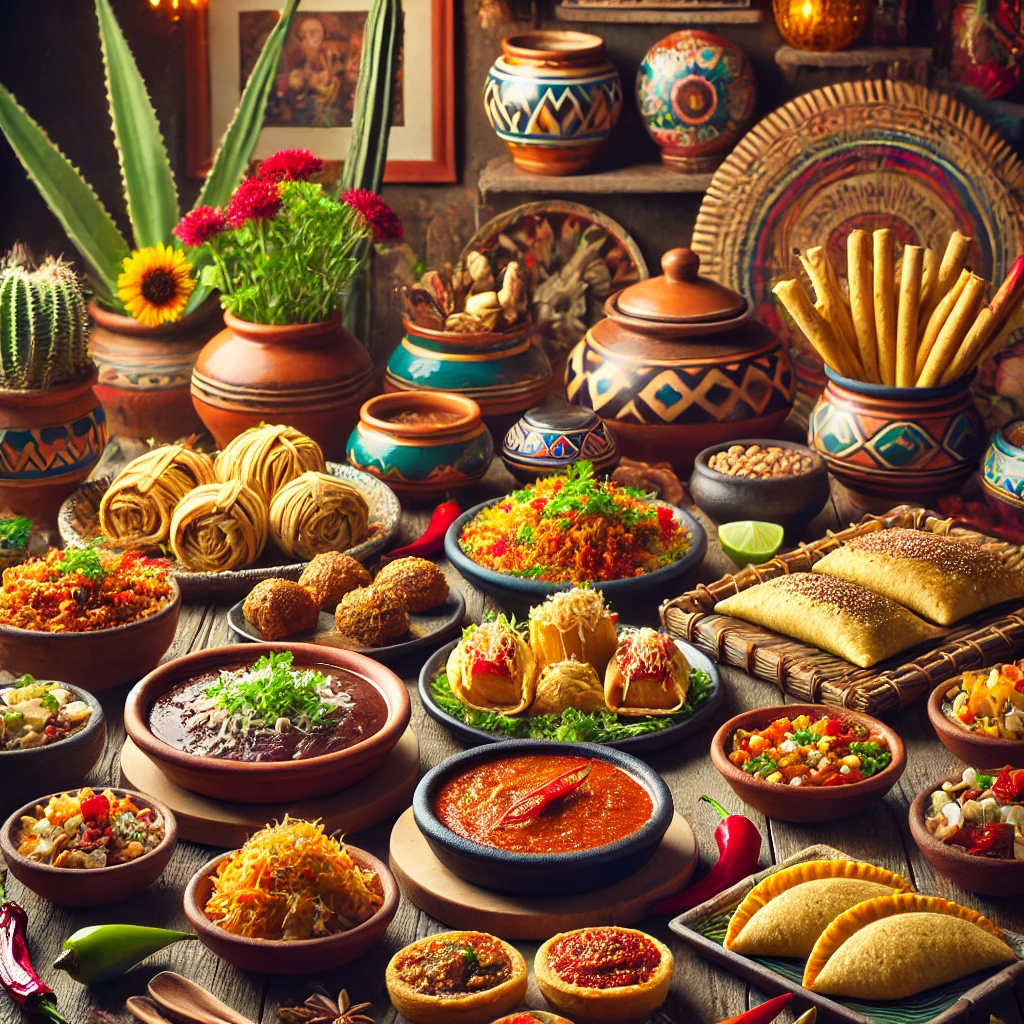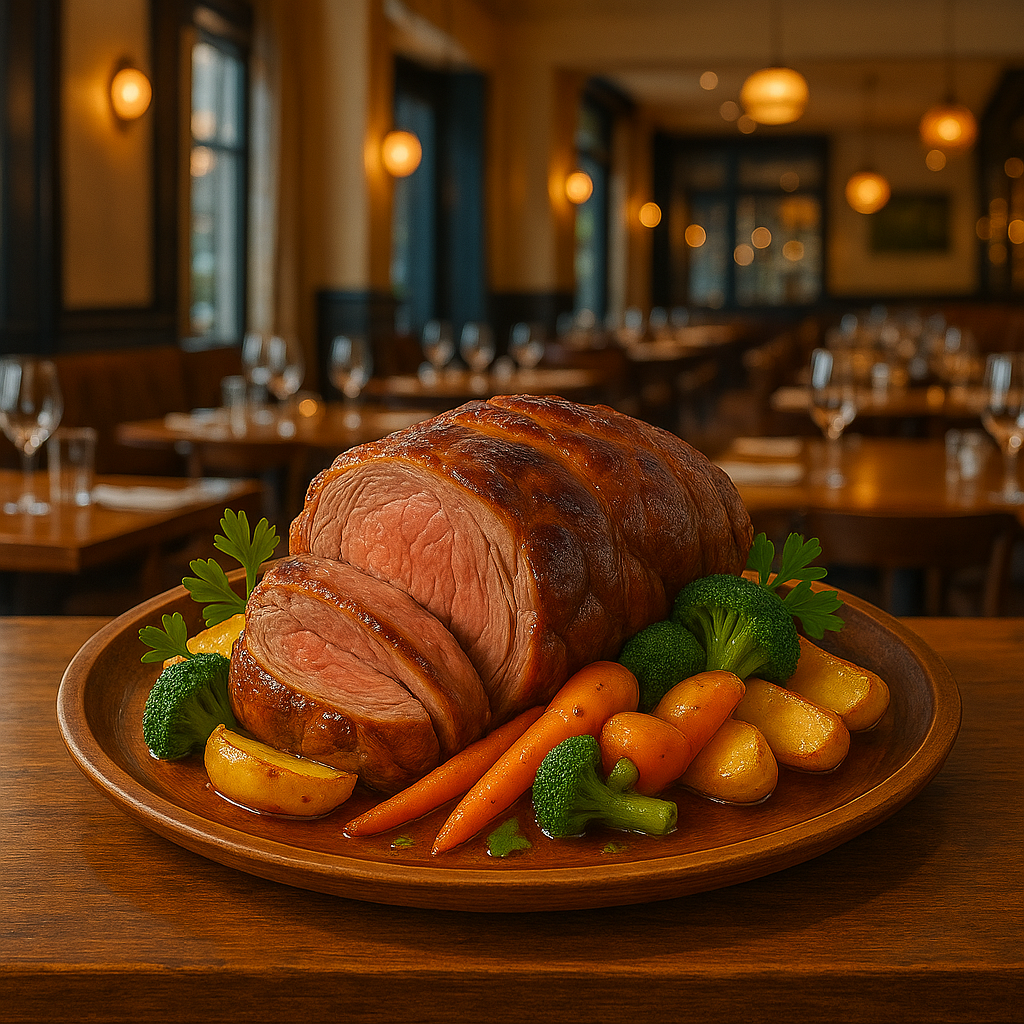Table of Contents
Introduction to Mexican Culinary Diversity
Mexican cuisine is a vibrant tapestry woven from the rich cultural heritage of its diverse regions, history, and indigenous influences. Recognized by UNESCO as an Intangible Cultural Heritage of Humanity, it transcends mere sustenance, serving as a crucial aspect of local culture and identity. This culinary diversity is an intricate mosaic, showcasing traditional dishes and ingredients that vary significantly from one state to another. The variation in climate, geography, and cultural practices contributes to a broad spectrum of flavors, techniques, and presentations that are quintessentially Mexican.
Each region of Mexico boasts unique culinary specialties, reflecting local customs and indigenous practices. For instance, Oaxaca is famous for its mole, a complex sauce that blends various ingredients into a rich, savory experience. Meanwhile, the coastal areas offer dishes based on fresh seafood, with recipes passed down through generations. Similarly, the Yucatán Peninsula introduces various spices and tropical fruits, creating a unique fusion of flavors that distinguish its traditional offerings. These regional distinctions reveal not only geographical influences but also historical narratives shaped by political, social, and cultural changes throughout Mexico’s past.
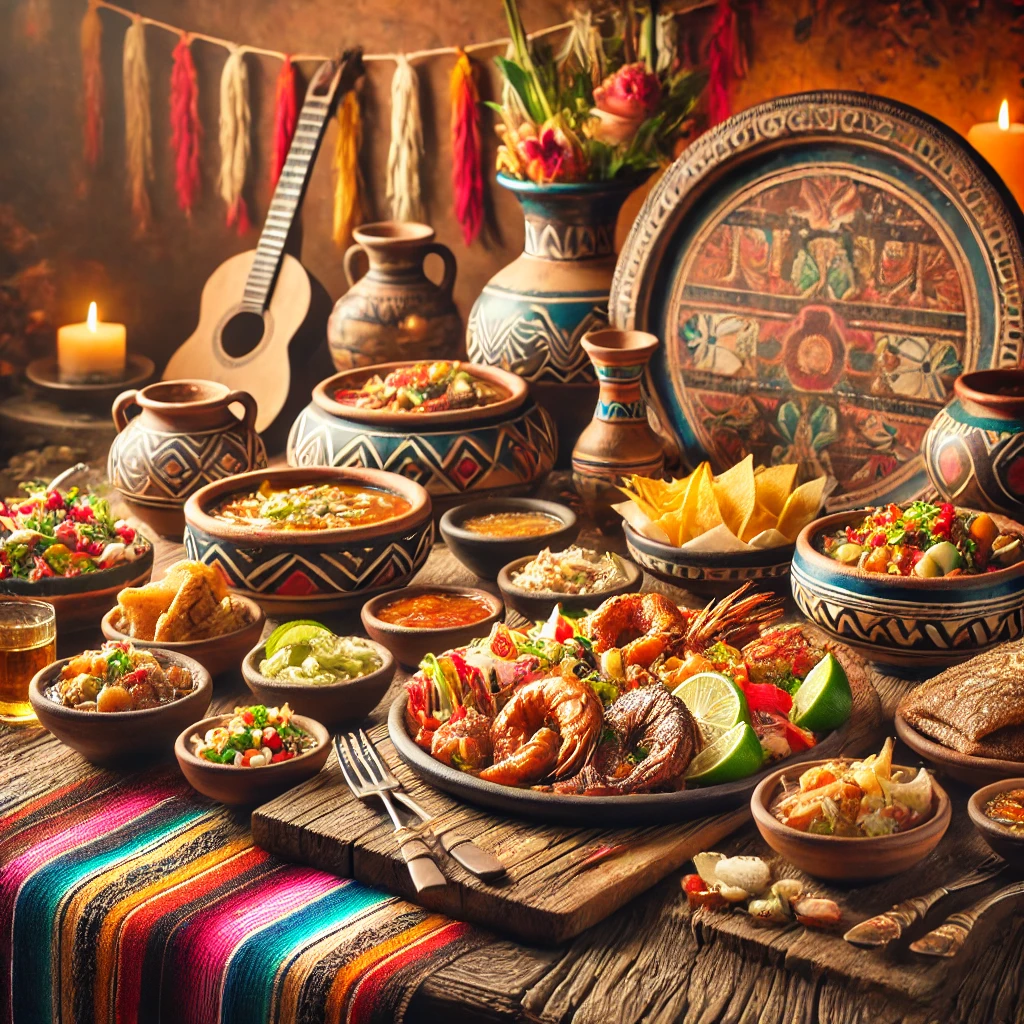
Traditional Mexican dishes often reveal more than just flavor; they tell stories of cultural heritage and community practices. These meals are typically prepared during festivals, family gatherings, and special occasions, emphasizing their role in nurturing relationships and community bonds. Moreover, many lesser-known dishes, which may not fit within the common repertoire, encapsulate centuries of culinary evolution and innovation. As we explore this remarkable diversity, we will journey through ten must-try traditional Mexican dishes that, while perhaps not commonly known, are essential to understanding the broader scope of Mexican gastronomy.
Sopes – The Flavorful Base
Sopes are a quintessential traditional Mexican dish that showcase the rich culinary traditions of the country. Often referred to as “handmade corn cakes,” they form a delightful base for a variety of toppings, making them both versatile and inherently flavorful. The primary component of sopes is corn masa, which is crafted from finely ground corn. This dough is then shaped into a thick disc, usually about four to six inches in diameter, with raised edges that act as a barrier to hold in the delicious toppings that follow.
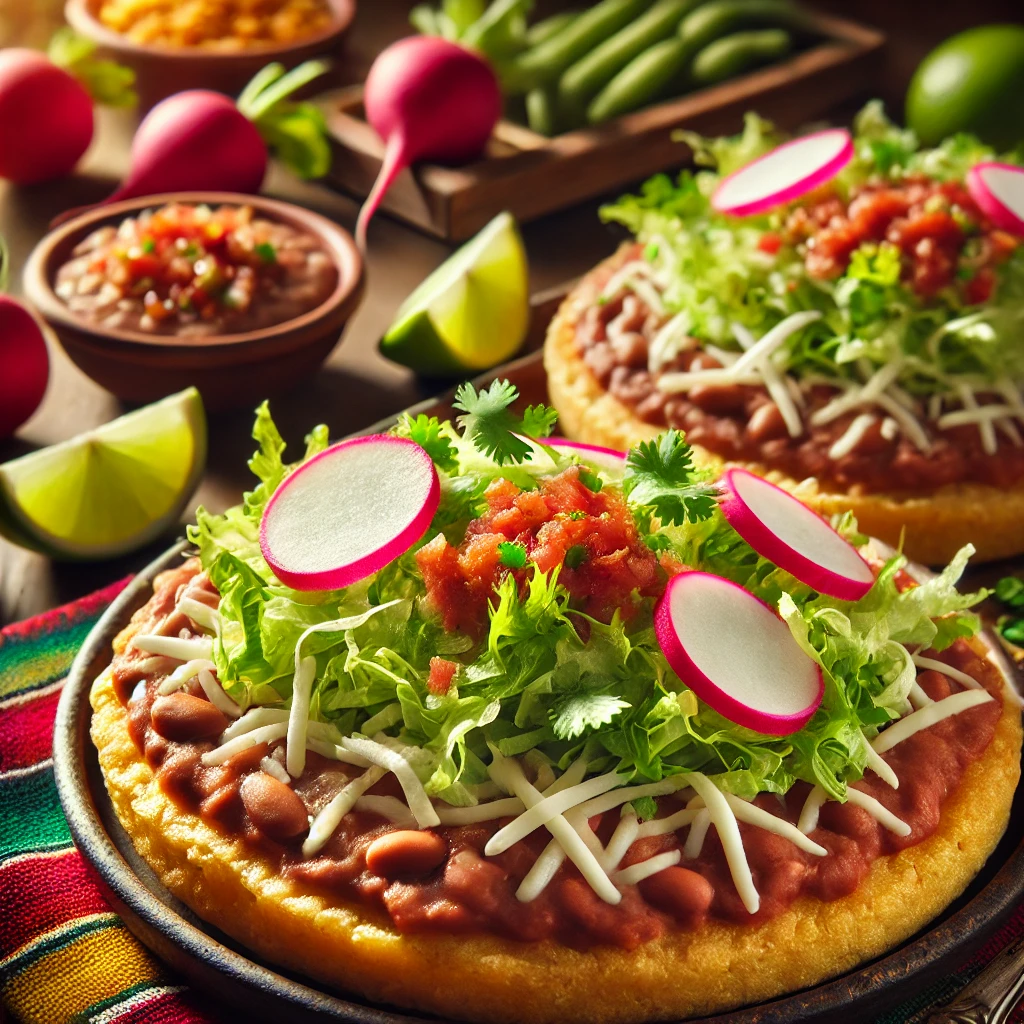
In terms of toppings, sopes are highly customizable, reflecting the diverse ingredients available across Mexico’s various regions. Common toppings include refried beans, which add a rich, hearty layer. Additionally, options such as seasoned meats—like shredded chicken, beef, or pork—bring further depth to each bite. Traditionally, sopes are adorned with fresh diced vegetables, such as lettuce or cabbage, creamy crumbled cheese, and a tangy salsa, which amplifies the overall flavor profile and provides a delightful contrast to the soothing corn masa.
Culturally, sopes hold a significant place in Mexican cuisine. They are often enjoyed during family gatherings, celebrations, and local festivities, serving as comfort food that brings people together. Regions across Mexico put their own spin on sopes, with variations that highlight local ingredients or traditional cooking methods. For instance, in Oaxaca, you may find sopes topped with unique regional cheese and locally sourced ingredients, while in the north, hearty meats and robust salsas might prevail. This adaptability not only makes sopes a popular choice for food lovers but also a canvas upon which the diverse flavors of Mexico can be painted, ensuring each bite is an exploration of the country’s rich gastronomic heritage.
Tacos de Pescado – Coastal Treasure
Tacos de pescado, or fish tacos, are a signature dish hailing from the coastal regions of Mexico, particularly popular in cities such as Ensenada and Baja California. These delectable tacos showcase a unique blend of flavors that set them apart from more commonly recognized taco types. Unlike traditional beef or chicken tacos, tacos de pescado primarily feature fresh, battered, and fried fish, offering a lighter and more refreshing alternative to meat-based options.

The preparation of tacos de pescado typically involves coating white fish, such as cod or tilapia, in a seasonally spiced batter before frying it to a golden crisp. This method not only enhances the fish’s flavor but also creates a delectable contrast of textures. Once cooked, the crispy fish is nestled in warm corn tortillas, a staple in Mexican cuisine. Accompanying these tacos are fresh toppings, such as shredded cabbage, pico de gallo, and a drizzle of creamy chipotle sauce, which add layers of flavor and crunch.
The origins of tacos de pescado can be traced back to the fishermen’s traditions along Mexico’s Pacific coast, where fishermen would often fry their daily catch and serve it in tortillas for a convenient meal. Over the years, this humble dish has transcended its origins and gained immense popularity in beach towns and beyond, being celebrated for its ability to capture the essence of coastal life. Today, tacos de pescado are enjoyed not only by locals but also by tourists seeking an authentic taste of Mexico.
This seafood-centric taco variety exemplifies the cultural diversity within Mexican cuisine, offering a distinct culinary experience that emphasizes the freshness of ingredients and an appreciation for coastal living. Tacos de pescado invite diners to indulge in the vibrant flavors of the sea while showcasing regional traditions that continue to thrive in modern gastronomy.
Chiles en Nogada – A Patriotic Delight
Chiles en nogada is a celebrated dish deeply rooted in Mexican culinary tradition. It is composed of poblano peppers that are expertly stuffed with a delicious mixture of meat, fruits, and spices. This enticing combination is then draped in a rich walnut sauce and garnished with vibrant pomegranate seeds, creating a visually stunning presentation. The colors of the dish—the green of the peppers, the white walnut sauce, and the red pomegranate—symbolically represent the Mexican flag, making it a particular favorite during the patriotic festivities surrounding Mexican Independence Day.
Traditionally served between August and September, chiles en nogada leverages the harvest of seasonal ingredients, particularly fresh pomegranates and walnuts, which reach their peak during this period. The dish is not only a feast for the eyes but also an embodiment of the flavors that signify the richness of Mexican culture. Each component contributes to the overall taste, with the sweet and savory stuffing often featuring a balance of ground meat and fruits like apples, peaches, and plantains, further enriched with spices such as cinnamon and cloves.

The cultural importance of chiles en nogada extends beyond its delightful taste. It is often prepared and shared among families, fostering a sense of unity and celebration during Mexican Independence Day. This dish serves as a reminder of the country’s rich history and its commitment to honoring traditional practices. Visitors to Mexico, as well as locals, hold chiles en nogada in high regard, making it a must-try when seeking to experience authentic Mexican gastronomy. By enjoying this beautifully crafted dish, one not only delights in its flavors but also embraces a significant piece of Mexico’s cultural heritage.
Mole de Olla – The Hearty Stew
One of the quintessential traditional dishes of Mexico, mole de olla is a hearty stew that represents the rich culinary heritage of the country. Often characterized as a comfort food, it is a dish that brings families together, particularly during gatherings and celebrations. The heart of mole de olla lies in its intricate blend of ingredients, which typically includes beef, corn, green beans, squash, and various aromatic herbs and spices such as cilantro and epazote.

The preparation of mole de olla is both simple and labor-intensive, often passed down through generations. Chefs begin by simmering the beef to create a flavorful broth, which serves as the base for the stew. As the meat tenderizes, fresh vegetables are added gradually, allowing them to maintain their texture while absorbing the broth’s rich flavors. The slow cooking method is essential, enabling the ingredients to merge harmoniously. Traditionally, the stew is served warm, accompanied by fresh tortillas, which are perfect for scooping up the nourishing elements of the dish.
The significance of mole de olla extends beyond mere sustenance; it symbolizes familial bonds and community. Each region in Mexico boasts its own variation, adapting the dish to local produce and preferences. For instance, in some areas, mole de olla may incorporate different types of meat or a variety of seasonal vegetables, reflecting the agricultural abundance of the region. This adaptability not only highlights the local culture but also emphasizes the communal aspect of sharing meals, where families come together to enjoy a bowl of hearty, comforting stew. The diverse interpretations of mole de olla exemplify the beauty of Mexican cuisine, wherein every variation tells a unique story.
Tlayudas – The Oaxacan Pizza
Tlayudas, often referred to as the “Oaxacan pizza,” are a culinary marvel that highlight the rich culinary heritage of Oaxaca, Mexico. These distinctive dishes feature a large, crispy tortilla base that serves as the foundation for an array of delicious toppings. Traditionally, tlayudas are layered with refried black beans, a generous spread of cheese, and are usually adorned with various meats such as tasajo (beef), cecina (pork), or chorizo. The combination of textures and flavors makes this dish not only appetizing but also a unique representation of Oaxacan gastronomy.

The origin of tlayudas can be traced back to indigenous communities in the Oaxaca region, where traditional cooking methods and local ingredients were lovingly combined. Initially, tlayudas were a simple meal for locals, but over the years, this dish has garnered attention among food lovers and culinary tourists alike. Despite this growing interest, tlayudas remain a staple for many Oaxaqueños, who cherish their authenticity and flavor. The preparation process, often involving a wood-fired oven, enhances the smoky taste of the tortillas, imparting a signature flavor that cannot be replicated easily elsewhere.
Carnitas – The Flavor-Packed Pork
Carnitas, which translates to “little meats” in Spanish, is a quintessential traditional Mexican dish known for its rich flavor and tender texture. This classic dish originates from the Mexican state of Michoacán and is prepared by slow-cooking pork until it is incredibly tender and flavorful. The preparation typically involves marinating the pork in a mixture of spices, citrus, and sometimes even beer. This process enhances the meat’s natural flavors and results in a succulent dish that is both delectable and satisfying.
The method of cooking carnitas traditionally incorporates a long braising technique, which allows the pork to cook slowly in its juices. Once the meat reaches the desired tenderness, it is often shredded and then briefly pan-fried to achieve a crispy exterior. This delightful contrast between the crispiness on the outside and the juicy meat on the inside is what makes carnitas a popular choice among both locals and visitors alike.
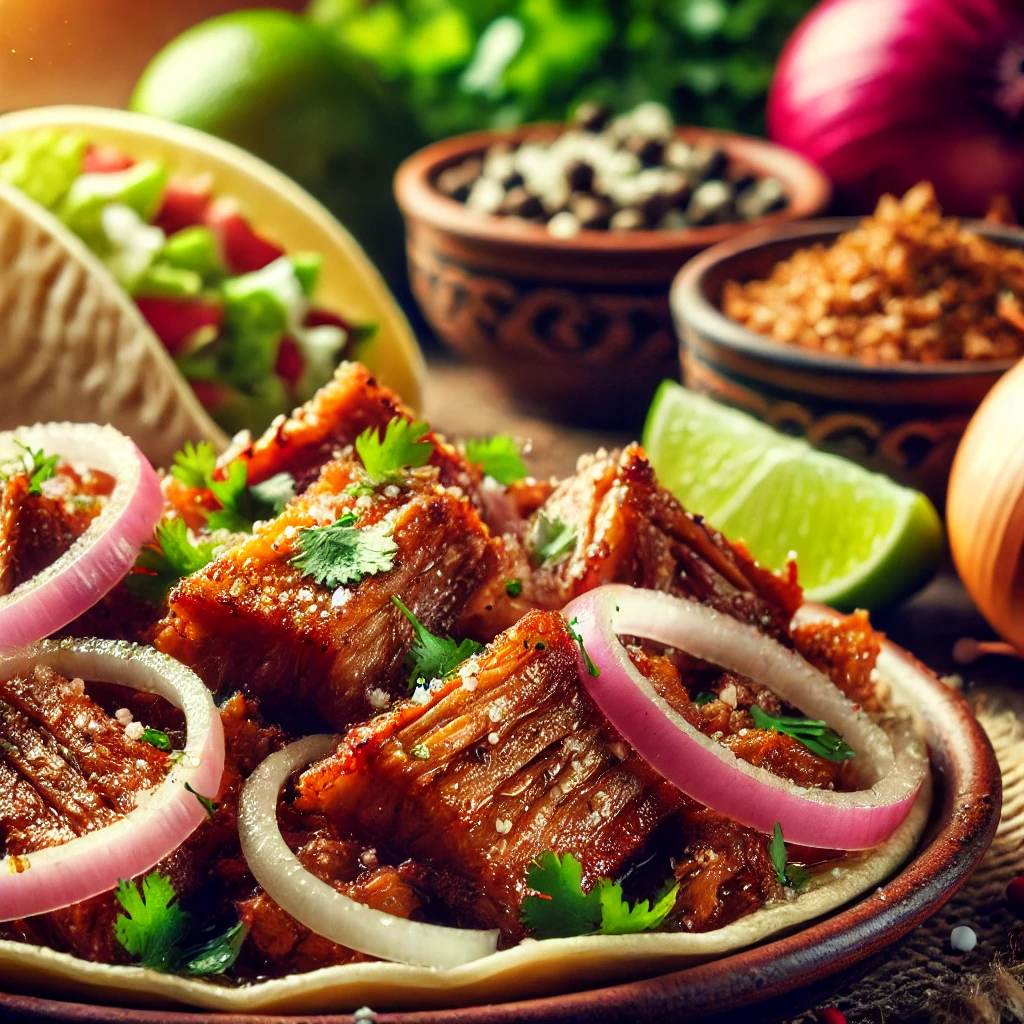
Carnitas can be enjoyed in various dishes, but perhaps the most prevalent way is in tacos and burritos. When served in tacos, carnitas are typically accompanied by fresh cilantro, diced onions, and a squeeze of lime. The layered flavors create a harmonious balance that highlights the taste of the pork. Additionally, carnitas can be served with rice and beans for a fulfilling meal, or as a filling in tamales.
To truly experience authentic carnitas, one should visit local taquerías and restaurants that specialize in this dish. Michoacán is often regarded as the best place to savor traditional carnitas, but many Mexican eateries across the world offer their interpretations as well. In essence, indulging in carnitas is not merely about enjoying a meal; it is also about embracing a vibrant culture steeped in culinary heritage.
Quiote – A Delicacy from the Heart of Mexico
Quiote is a unique culinary treasure that showcases the rich agricultural and cultural heritage of Mexico. This dish is made from the flowering stalk of the agave plant, predominantly found in regions where agave cultivation is prominent, such as Oaxaca and Jalisco. Historically, the quiote was often considered a symbol of sustenance for rural communities, particularly during periods of drought when other food sources were scarce.
To prepare quiote, the tender flower stalks are harvested at their peak, typically when they are still young and succulent. The preparation entails stripping the stalks of their tough outer layer and cutting them into manageable pieces. These pieces can be grilled, sautéed, or used in various traditional dishes, adding a distinctive flavor similar to that of asparagus but with a unique herbal aroma. Quiote is often incorporated into main dishes, such as tacos or quesadillas, or served as a side, complementing meats and other vegetables.

Consumption of quiote is relatively rare, primarily due to its limited availability and the knowledge required to harvest it properly. The flowering phase of the agave plant doesn’t occur annually, and once the quiote stalk is removed, the plant can no longer be used to produce tequila or mezcal. As such, many locals cherish this ingredient, preserving its culinary significance while respecting the agave plant’s lifecycle. Quiote serves not only as a gastronomic delight, but also as a reminder of traditional farming practices and relationships with nature.
This dish encapsulates the essence of Mexican gastronomy, where the intersection of resourcefulness and flavor creates lasting memories. Exploring quiote offers food enthusiasts a glimpse into the lesser-known aspects of Mexican cuisine, reinforcing the importance of preserving such unique culinary practices for future generations.
Ceviche de Champiñones – A Vegetarian Option
Ceviche de Champiñones is a delightful vegetarian alternative to the traditional fish ceviche, offering an innovative twist that caters to those seeking non-seafood options. This refreshing dish is primarily made using fresh mushrooms, typically button or portobello, which provide a meaty texture and absorb flavors exceptionally well. The preparation method is strikingly similar to that of conventional ceviche, making it a suitable option during warm-weather dining or picnics.
To prepare ceviche de champiñones, one starts by slicing the mushrooms into thin, bite-sized pieces. These are then marinated in a concoction of lime juice, which acts as the ‘cooking’ agent, similar to how it does in traditional ceviche. The acidity of the lime not only enhances the mushrooms’ flavor but also adds a refreshing tang that is perfect for outdoor gatherings. It is common to incorporate chopped tomatoes, red onions, cilantro, and diced jalapeños to elevate the dish with vibrant colors and an exciting taste profile.

One of the hallmark traits of ceviche de champiñones is its unique flavor mixture. While fish ceviche is characterized by its oceanic notes and often includes seasonings like cumin and salt, the mushroom version offers an earthy taste with a subtle umami undertone. This makes it an intriguing alternative for vegetarians or anyone looking to explore new flavors without the use of seafood. Another advantage is that it is often lighter and healthier compared to its fish counterpart, making it highly appealing during hotter months.
Overall, ceviche de champiñones stands out as a refreshing, flavorful addition to any menu, demonstrating that traditional recipes can easily be adapted to accommodate diverse dietary preferences without sacrificing taste or quality.
Elote – A Street Food Staple
Elote, or Mexican street corn, is a culinary delight that has captured the hearts of many, both in Mexico and around the world. Traditionally, elote is prepared by grilling fresh corn on the cob until it reaches a golden brown hue, imparting a distinctive smoky flavor. The process is often accompanied by a generous slathering of mayonnaise or crema, which adds creaminess and helps the toppings adhere to the surface of the corn.
Once dressed, elote is typically sprinkled with cotija cheese, a salty, crumbly cheese that perfectly complements the sweetness of the corn. Additionally, a dusting of chili powder or sauce provides a spicy kick, while a squeeze of lime introduces a zesty brightness. This combination of flavors and textures makes elote an enticing street food staple enjoyed by locals and visitors alike.

Elote is not only popular in urban centers like Mexico City and Guadalajara but also showcases regional variations across the country. For instance, in some areas, you may find elote served on a stick, turning it into a convenient snack for those on the go. In other regions, corn may be prepared as “esquites,” where the kernels are cut off the cob and served in cups with similar toppings, providing a different yet equally delicious experience.
Beyond its culinary appeal, elote plays a significant role in Mexican culture. It is often associated with public festivities, local markets, and street fairs, becoming a social activity where friends and families gather to enjoy this simple yet flavorful dish. As elote’s popularity continues to grow internationally, its authentic flavors and charming presentation are drawing new admirers, further enriching the global appreciation of traditional Mexican cuisine.

